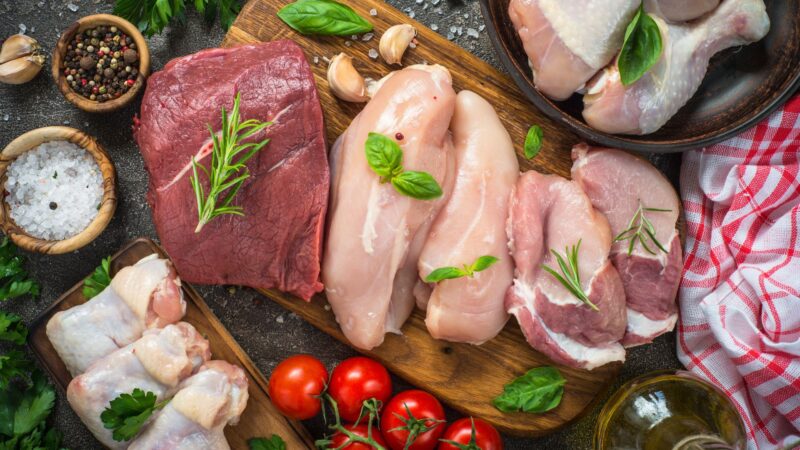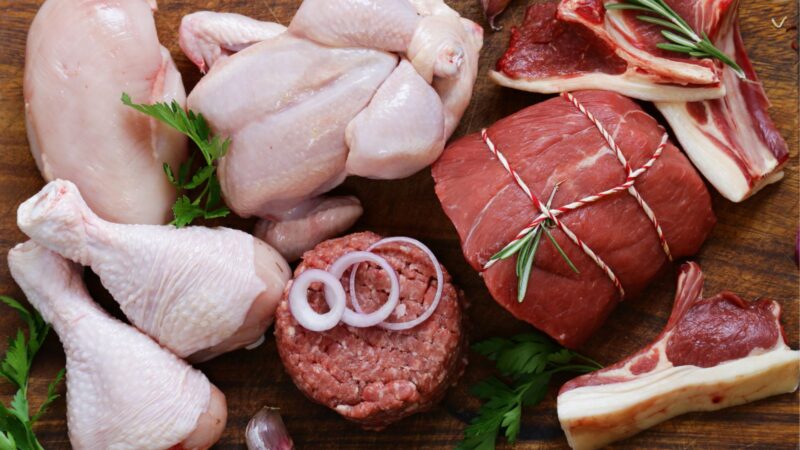Ensuring that meat is cooked to the proper temperature is essential for food safety and taste. In this article, we will explore the safe meat serving temperatures, storage practices, and reheating methods.
The safe meat serving temperature varies depending on the type of meat. For example, steaks and roasts should be cooked to 145°F, ground beef to 160°F, and poultry to 165°F. These temperatures ensure that harmful bacteria are killed, making the meat safe to eat.
Curious to learn more? We will dive into the specific temperature guidelines for various types of meat, safe storage and reheating practices, and tips on using a meat thermometer. Get ready to become a master of food safety and savor delicious, well-prepared meals!
Meat Temperatures and Safety Guidelines

Steak/Beef
For steak, roasts, and chops, the safe serving temperature is 145°F (63°C) with a 3-minute rest time. Cooking to this temperature will result in medium-rare doneness, which is flavorful and juicy.
Pork
Pork should be cooked to an internal temperature of 145°F (63°C) and allowed to rest for 3 minutes. This ensures tenderness and safety, while still preserving the meat’s juiciness.
Poultry
Chicken, turkey, and other poultry should be cooked to a safe internal temperature of 165°F (74°C). This applies to whole birds, parts, and ground poultry.
Ground Poultry
When cooking ground poultry, ensure that the meat reaches an internal temperature of 165°F (74°C) to kill any harmful bacteria present.
Lamb
Cook lamb to a minimum internal temperature of 145°F (63°C) and allow it to rest for 3 minutes. This will result in medium-rare doneness, which is both safe and delicious.
Ham, Fully Cooked (To Reheat)
To reheat fully cooked ham, heat it to an internal temperature of 140°F (60°C) for optimal safety and flavor.

Ground Meat and Meat Mixtures
For ground meats, including beef, pork, and lamb, the safe internal temperature is 160°F (71°C). This ensures that any bacteria in the meat are destroyed.
Fish and Shellfish
Fish should be cooked to an internal temperature of 145°F (63°C), while shellfish should be cooked until their shells open and the flesh is opaque and firm.
Eggs and Egg Dishes
Cook eggs until both the yolk and the white are firm. For egg dishes like casseroles and quiches, ensure they reach an internal temperature of 160°F (71°C).
Casseroles
Casseroles should be cooked to an internal temperature of 165°F (74°C) to ensure that all ingredients are heated properly and safe to eat.
Stuffing, Dressing
Whether cooked inside or outside the bird, stuffing and dressing should reach a minimum internal temperature of 165°F (74°C) for safety.
Reheated Leftovers
When reheating leftovers, heat them to an internal temperature of 165°F (74°C) to kill any bacteria that may have grown during storage.
Safe Storage of Cooked Food and Leftovers

Store cooked food and leftovers in shallow containers and refrigerate within two hours of cooking. Divide large amounts of food into smaller portions for quicker cooling.
Storing and Reheating the Leftovers
Store leftovers in the fridge for 3-4 days or in the freezer for 2-3 months. When reheating, ensure they reach 165°F (74°C) for safety.
Are Your Refrigerator and Freezer Cold Enough?
Your refrigerator should be set at 40°F (4°C) or below, and your freezer at 0°F (-18°C) or below. These temperatures slow bacterial growth, keeping your food safe and fresh for longer.
How to Take Meat Temperature

To accurately measure the temperature of meat, use a food thermometer. Insert the probe into the thickest part of the meat, avoiding bones and fat. For thin cuts, insert the probe sideways. Wait for the temperature to stabilize before reading the display.
Final Thoughts
Understanding safe meat serving temperatures and proper food storage practices is crucial for ensuring food safety and enjoying delicious meals. By following these guidelines and using a food thermometer, you can confidently serve your family and friends a delightful, wholesome, and risk-free culinary experience.
Related: Why Is Goat Meat So Expensive? | The Ultimate Guide
List of Sources
Safe Minimum Internal Temperature Chart
